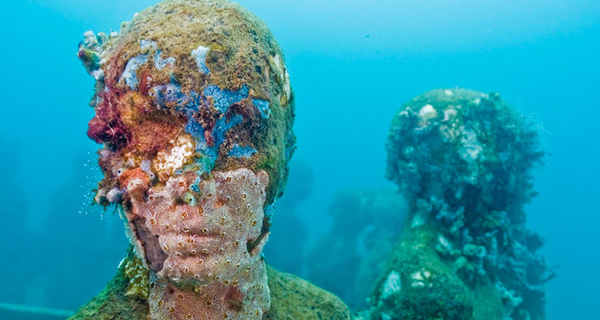The study analyzed the diversity of fish associated with four types of artificial reefs.
Artificial reefs could be an alternative habitat and refuge and food space for hundreds of marine species, given the great stress and deterioration that coral reefs are currently suffering, caused by the increase in temperature and the average sea level; the increase in water pollution from tourist activities or the effects of the change in land use in the coastal area; the growth of urban sprawl; as well as the presence of invasive species; and the impact of diseases on corals such as white syndrome and coral bleaching.
Dr. José Adán Caballero Vázquez and M.C. Jorge Carlos Peniche Pérez, researcher and technician of the Water Sciences Unit of CICY, respectively, explained that valuable information was recently obtained regarding the ecological role of artificial reefs, through the master’s thesis “Evaluation of the ichthyofauna associated with artificial reefs in the National Park Costa Occidental de Isla Mujeres, Punta Cancún and Punta Nizuc, Quintana Roo”, by M. C. Jazmín González Reyes.
The study analyzed the diversity of fish associated with four types of artificial reefs installed at the study site, specifically, the reefs “Reef Ball”, “Reef Nursery Site”, “The Sculptures of the Underwater Museum (MUSA)” and “The Sunken Ships”.
Likewise, the efficiency of these structures as artificial reefs was studied from an ecological point of view, comparing the four types of reefs, which present greater complexity and cavities, which allow greater availability of space susceptible to being occupied by reef fish and compare with the associated biodiversity of an adjacent natural reef.
TYT Newsroom


